In this blog, we will discuss the numerous advantages of using Siemens Multiuser Commissioning Mode. Siemens Multiuser is a powerful tool allowing for multiple engineers to edit a single program in tandem. Check out my blog on Siemens Multiuser Tips and Tricks for some additional information as well.
What?
Multi-User Server (MUS) Commissioning Mode is a TIA Portal tool used to ease the commissioning process when multiple engineers are making online changes and downloading concurrently.
Why?
The main advantage of using Commissioning Mode is the ability to ensure consistency between the server project and the PLC while multiple users are downloading to the PLC. This feature will also alleviate the headache of having to coordinate download efforts and ensure a consistent program between many local sessions or even single-user sessions.
One common theme of using MUS while commissioning is the potential to see offline/online differences with the PLC when they aren’t really there. Timestamp differences are not handled automatically, so if someone performs a download to the PLC that comes with a timestamp, other engineers (even after refreshing from the server copy) will see differences between their project and the project downloaded to the PLC.
Without Commissioning Mode
After downloading to the PLC from the Session B project, it shows offline/online consistency, but Session A now shows conflicts. This typically happens when the order of Download/Check-in/Refresh is not done in the correct order and is usually a result of a timestamp difference between the projects. When downloading from Session A at this point, Session B (even when up to date with the server copy) will still show online/offline differences.
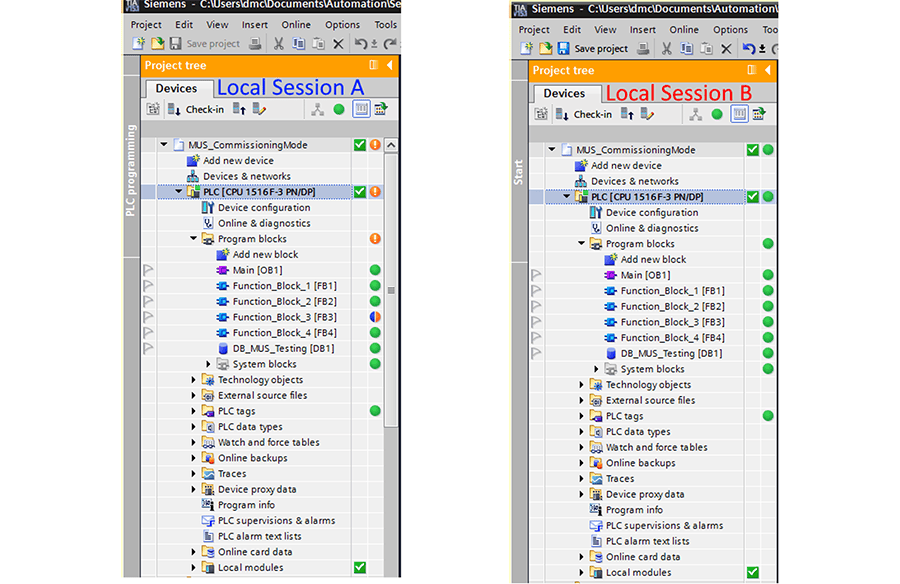
If you complete a comparison in Project A for what’s different, it will show consistency between the online and offline projects. This can be attributed to timestamp differences that pop up depending on the order of operations mentioned above.
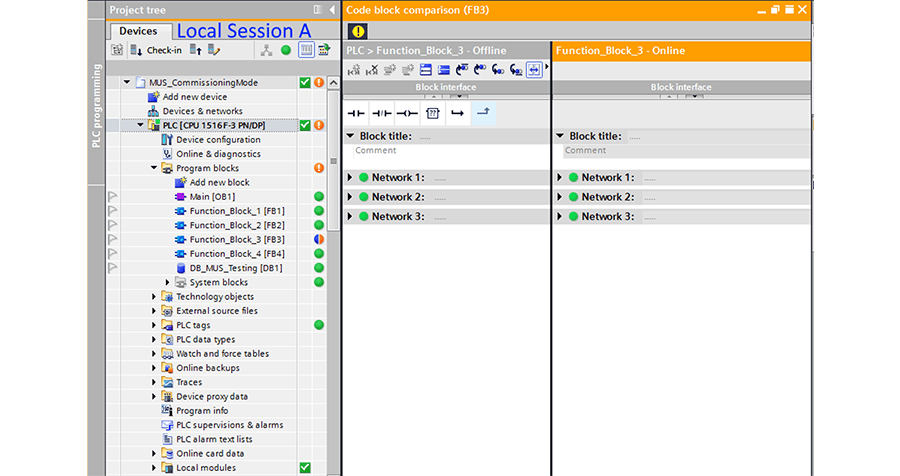
Commissioning Mode Enabled
To incorporate changes made when commissioning mode is turned on, simply download the changes to the server. This will also check the changes into the server copy to ensure consistency. This process will also make time stamps consistent across projects, eliminating mystery offline/online discrepancies.
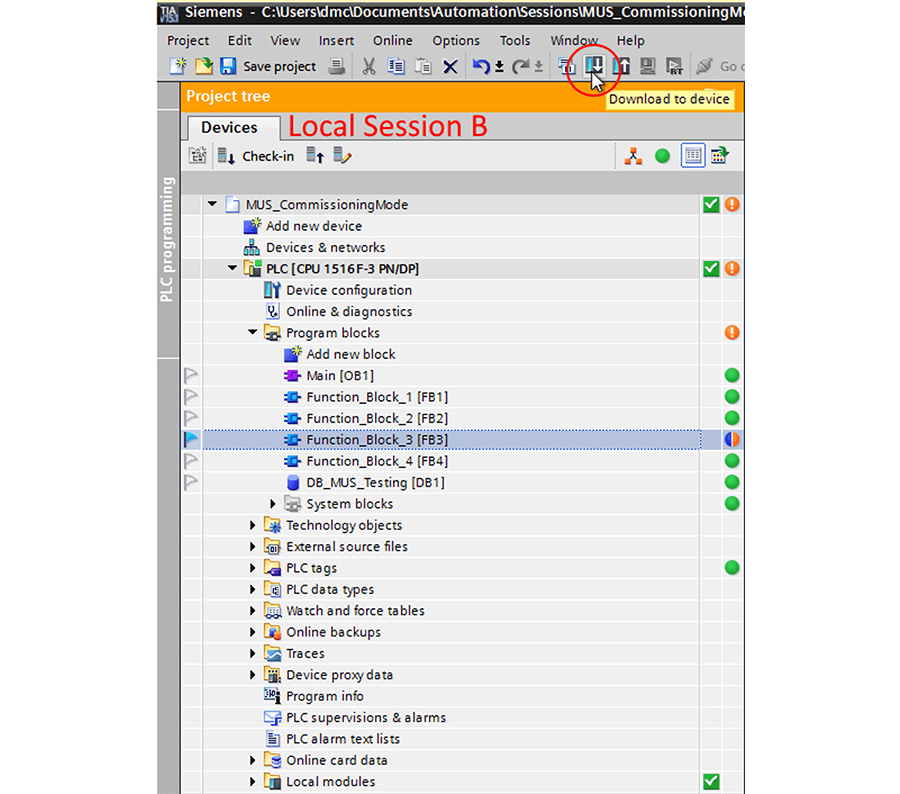
When Commissioning mode is active, downloading the program will show the need to refresh the server in other local sessions.
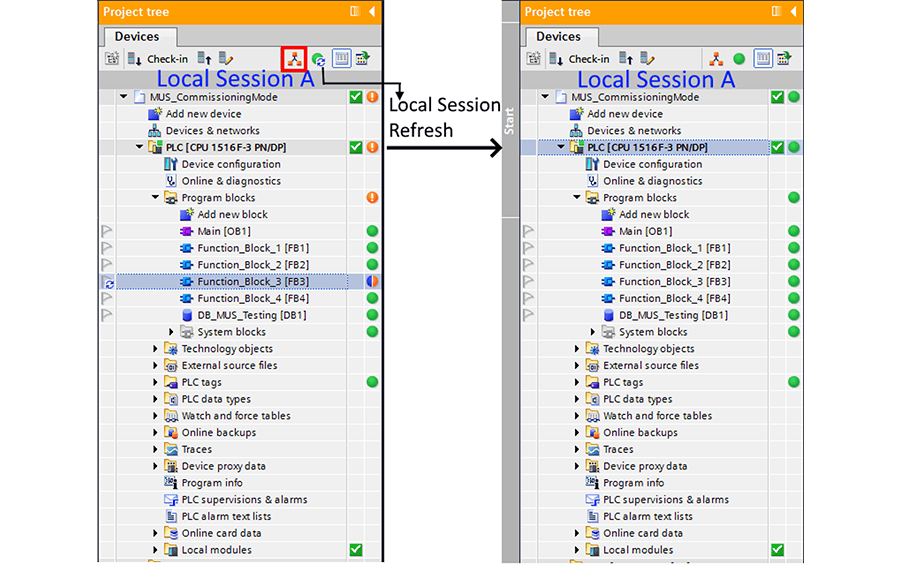
How?
You can turn on Commissioning Mode with a single click in MUS Administration, provided you meet certain conditions. Siemens lists these conditions as:
- All local session changes checked in and updated (current with server copy)
- No selections (flags) are made in the local sessions
- The PLC is downloaded with the most recent version of the server project
When you have met these conditions, and you click the Multiuser Commissioning, you’ll see the operating mode change to ‘Commissioning Mode.’ Siemens recommends leaving the ‘Check for different data…’ option checked (which it is by default) and should only be deactivated if using an S7-300/400 CPU.
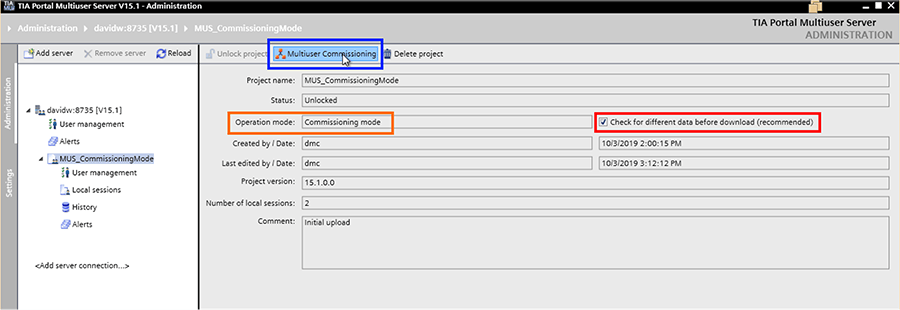
Caveats?
This feature is available for TIA Portal V15.1 and will not be available for older versions of Portal. Multiuser server features go back a few versions, but this is new as of 15.1.
Learn more about our Siemens Expertise and TIA Portal Development Services. Contact us with any project inquiries.